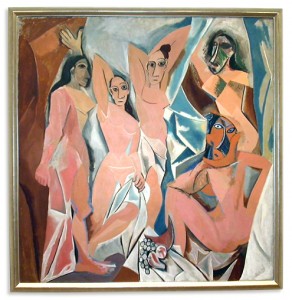Art vs. Money, Page 2
Last year, at a symposium held by the Tamarind Institute in Albuquerque, I met Dave Hickey. Well, let’s be more precise. I went up to his table and asked him to sign my copy of The Invisible Dragon and said some words of sincere flattery and then left him to his conversation with Ed Ruscha. Yes, I was one of those annoying people who do that. I’d listened to the two of them discuss Ruscha’s work before a packed auditorium earlier in the day, during which Hickey had made a crucial assertion: it isn’t necessary to understand Ruscha’s work, but simply to love it so much you want to see more of it. This is, in a way, the heart of Hickey’s views on art: it’s about beauty, not meaning. (That’s a gross simplification that leaves Hickey’s indebtedness to Foucault out of the picture, but it will have to do.)
Hickey’s views on what has happened to Western art over the past several hundred years are both brilliant and troublesome. The people who love Hickey, as I do, are those who would have nothing to lose in the event that the entire structure of the art world were to be overthrown and replaced by a more democratic market economy in which the worth of art is determined by the love it evokes among those who look at it . . . wait a minute, doesn’t that describe the system that has elevated the likes of Koons and Hirst to their status as art world plutocrats? Hickey probably has no problem with that, though many do. For Hickey, the sale of art is the whole point of making it, and there’s nothing meretricious in that attitude, it’s simply the working out of his views about democracy, self-determination, freedom, and the wisdom of crowds. Here’s how he characterizes the birth of cubism in his book:
(Picasso) meets some rich and careless Americans and gradually, being no dummy, perceives among the cultural elite with whom he is hanging out, and perilously hanging on, a phase-shift in their parameters of self-definition. These folks are no longer building gazebos and placing symboliste Madonnas in fern-choked grottos. They are running with the bulls—something Picasso can understand.. . . so Pablo Picasso—neither the first nor the last artist whom rapacious careerism will endow with acute cultural sensitivity—goes for the throat, encapsulates an age with a painting of French whores, and through no fault of his own, creates the cornerstone of the first great therapeutic institution. I have no wish to diminish Picasso’s achievement by this insouciant characterization of it, but I do want to emphasize the fact that, during the period in which Demoiselles was painted, pictures were made primarily for people, not against them—and to suggest further that if we examine the multiplication of styles from 1850 to 1920, we will find, for each of them, a coterie of beholders, an audience already in place.
In other words, Picasso’s creative breakthrough and all of the other breakthroughs of modernism in that period were market-driven. This is anathema to those who see art as an oppositional force, a way of pushing back against the control of minds and emotions by economic and social forces that govern our likes and dislikes—in other words, what became the typical postmodern critical agenda in the second half of the 20th century. The outcome of this pernicious development–pernicious, from Hickey’s perspective–is the production of art that shocks and offends nearly everyone, in the name of therapy, under the rubric of no pain, no gain, in spiritual terms. He loathes this outlook, and the way it has given the academy and various institutions power over popular taste and judgment. We know better than you do what’s good for you, so look at it and learn to like it! That’s the implicit creed behind so much of what disgusts him in art.
It’s the question that Henry and Lenka were batting back and forth in my last post: should art be created for the sake of money? Should artists think about the market when they decide how to create their work? In other words, should art attempt to please a viewer in some way, charm the viewer, draw her into the work–and then deliver whatever “content” it must–instead of being a shock to the system, a wake-up call full of insolent friction. The irony of that conversation outside The Pride of Spitalfields is that neither of these artists are thinking of the market when they make their excellent, and little-known, work. They are being completely true to themselves. And yet Henry was taking Hickey’s side—the market is hugely important in the production of art, and should be, and art that reflects this may be exactly the kind of art we want. According to Hickey, that’s exactly what Picasso thought. But I sympathize with Lenka as well: Van Gogh was ahead of his market, sadly, and so it was right that he painted against the taste and understanding that surrounded him.
And that’s the problem, you have to believe both sides of this argument. Yes, artists should do work that beguiles the viewer, no matter how bitter the work’s underlying meaning is—both Whysall and Brazinova achieve this goal in their work. Their work enchants. And yet art must also be a genuine expression of who the artist is, even if that means the work repels everyone who looks at it—and this struggle never ends between authenticity and an attempt to create something people will find beautiful or at least fascinating. Every finished piece is, in some sense, a resolution of that struggle. As F. Scott Fitzgerald put it: “An artist is someone who can hold two opposing viewpoints and still remain fully functional.”

Comments are currently closed.